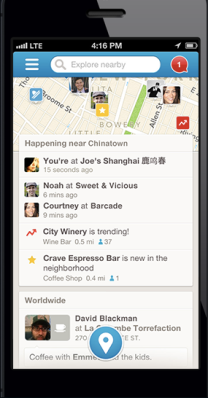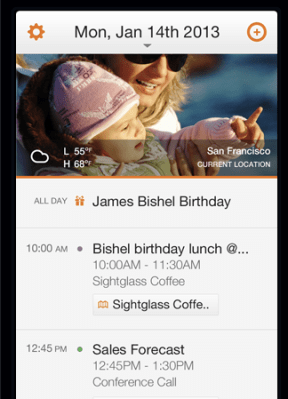So a guy walks into a bar … and his phone already knows how many of his friends are there, what he should order, how to get drink discounts, which girl in that bar is a good dating match, and what nearby stores and restaurants he should check out.
In a world rife with mobile devices, businesses have unprecedented access to information about their consumers. They can learn about our tastes and interests from social media, our purchasing habits from previous online behavior, and perhaps most importantly, our location.
Your significant other may not know where you are or what your desires are, but your phone does.
Creating and curating context is a key part of the mobile experience. Businesses need to know who their consumers are to stay competitive and achieve that elusive goal of reaching the right person with the right offer at the right time. Furthermore, consumers now expect more relevance and personalization from their interactions with businesses. We no longer want to search for things we like — we want them given to us. Delivering content in a contextually relevant manner is a cornerstone for mobile success.
For more on this topic, check out the “Digital lifestyle: Curating context in a connected world” track at VentureBeat’s MobileBeat conference, July 9-10.
Foursquare: bringing context to your social life
Foursquare is one of the most well-known examples of a location-based mobile app. Users “check-in” to specific locations from their phones to share their location with friends and earn points. The app has over 35 million registered users, nearly 4 billion total check-ins, and over 75 million API calls a day.
 “We are capturing this amazing signal about what millions of people are doing in the real world at every moment of the day in cities all around the globe,” said Foursquare data scientist Blake Shaw.
“We are capturing this amazing signal about what millions of people are doing in the real world at every moment of the day in cities all around the globe,” said Foursquare data scientist Blake Shaw.
Despite its large user base, Foursquare came under fire earlier this year for not being a “real business.” The app is free and people questioned how Foursquare was going to make actual money. The company took an unusual $41 million loan (following over $100 million in venture capital) and wasn’t able to generate notable revenue through advertising.
The answer? Foursquare can fork over its data to people who need it to create context.
Earlier this month, Foursquare began testing paid promotions with businesses in New York City. The promotions let businesses target people based on location, tastes, and, mostly notably, their check-in histories. Small businesses can advertise their locations in a promoted listing, and it will appear in Foursquare users’ feeds or in the “Explore nearby” section. The move is important because it may finally help Foursquare solve its user intent problem by giving users a way to discover new places that are actually relevant to them.
Foursquare also entered into a partnership with social data middleman Gnip to give Gnip access to Foursquare’s full firehouse — every check-in, everywhere, from everyone, in real time. Gnip bundles and resells this data to developers and big brands, who can use it to gain insight into their customer base and to better target new customers.
Tempo: bringing context to your calendar
Foursquare is great for anticipating where you want to go, but Tempo is tackling where you need to go. The company  just closed a $10 million first round of funding for a tool that “brings context to your calendar.” It uses artificial-intelligence technology to help people organize their daily schedules, anticipate where they need to be, and decide what tasks take priority over others.
just closed a $10 million first round of funding for a tool that “brings context to your calendar.” It uses artificial-intelligence technology to help people organize their daily schedules, anticipate where they need to be, and decide what tasks take priority over others.
Founder Raj Singh said he believes Web 3.0 is the “semantic” or “push” web, where consumers are presented with relevant information they need instead of looking for it through searches and feeds.
“Everything we do in our day has an intent,” he told VentureBeat. “By understanding these intents across various verticals, we can make the mobile device more anticipatory and put information in context. It’s all about reducing clicks, saving time, and making the user experience more fluid.”
Tempo creates context by integrating data from sensors on your mobile device with data from your calendar, address book, email, and third-party data like weather or your flight status.

